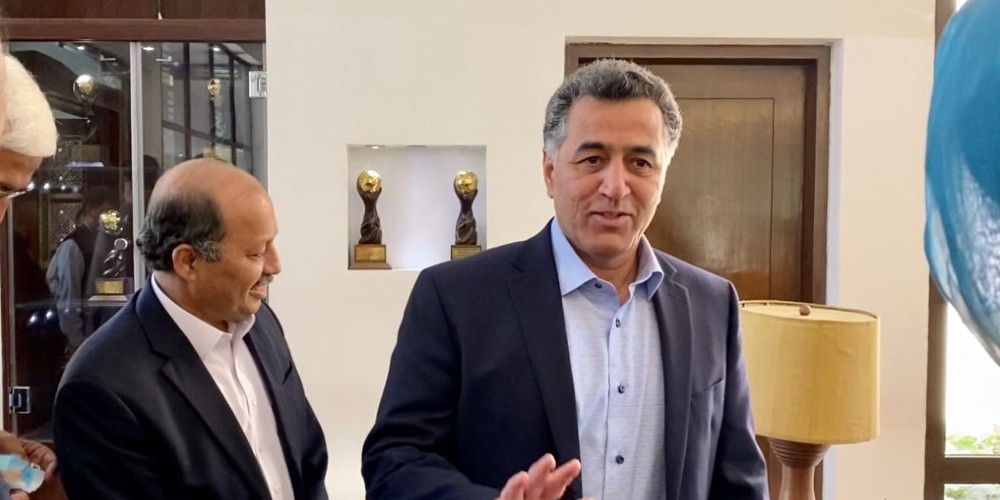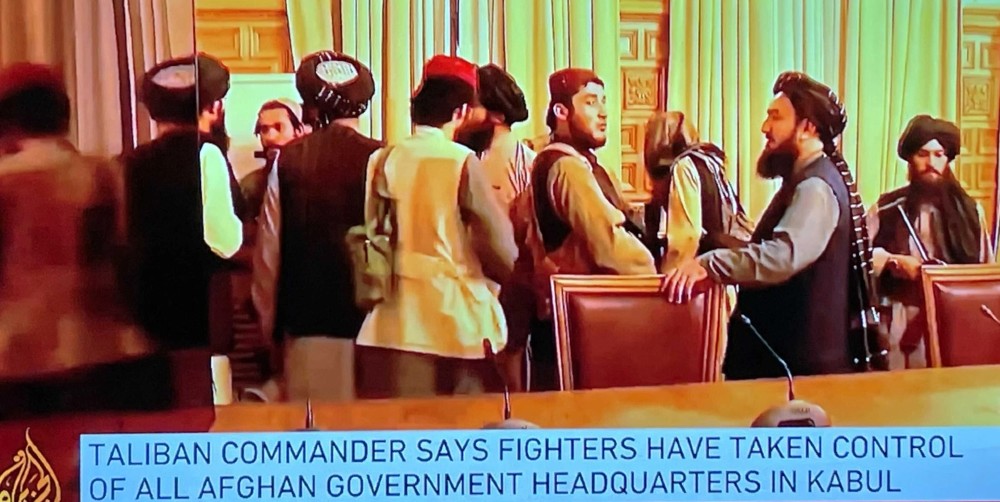In a series of articles exclusive to Canary Trap, investigative journalist, VK Shashikumar stitches together accounts of staff members who worked in President Ashraf Ghani’s administration. This series attempts to convey their perspectives on what happened on August 15th and what led to fall of Afghanistan’s Government and the swift takeover by Taliban. This 4th and the last part of the series looks at how Pakistan installed its most lethal terrorist enterprise, the Haqqani Network, as the new rulers of Afghanistan under the banner of Taliban.
VK SHASHIKUMAR
Pakistan’s invasion of Afghanistan to dethrone an elected government is being received with Afghans chanting “death to Pakistan”. By installing a puppet government led by some of the most wanted UN designated terrorists, Pakistan has sounded its death knell. So far, Pakistan’s military, and its Inter Services Intelligence (ISI), have had a free run incubating scores of terrorist-organisations and organised criminal syndicates as a client State of United States of America and Saudi Arabia. This industrial scale production and support of terror groups has now reached an end game. In an over-the-top, webbed communicative world driven by technology Pakistan will find it extremely difficult to prop its terror surrogates in Afghanistan.
Kabul now hosts a Pakistan-sponsored coalition government of terrorist groups, led by the Haqqani Network. This will be the first time in contemporary world history that a state sponsor of terrorism used terrorist assaults in a foreign country to unseat a government. Afghanistan is now a de-facto confederate of Pakistan with the latter’s facilitation in establishing a Government led by a terrorist enterprise which has massive investments in mining, real estate, narcotics, gun running and an array of organised criminal activities.
Taliban 2.0 is dominated by the Haqqani Network, designated as a ‘Foreign Terrorist Organization’ by U.S. after the 2011 attack on the U.S. Embassy compound in Kabul. It was after this attack that the then Chairman of the Joint Chiefs of Staff, Admiral Mullen, testified before Congress that the “Haqqani network acts as a veritable arm of Pakistani intelligence, the ISI. The admiral emphasised that with ISI support “Haqqani operatives planned and conducted the assault on the U.S. Embassy in September 2011.”
The United States of America signed an agreement with the Taliban, aka, the Haqqani Network in February 2020 with the stated intention of allied troop withdrawal from Afghanistan by August 31, 2021. Soon after ISI began military training of the terrorist fighters of the Haqqani Network in Pakistan’s tribal area of North Waziristan, world’s deadliest terrorist haven. This is the same base where Al-Qaida trained and planned terror attacks under the protective constellation of the Haqqani network. The objective was to takeover Afghanistan and establish a Taliban 2.0 rule with a big difference. The Taliban of today is merely a banner brand because more than two-thirds of Talib militia personnel are Pakistanis and/or Afghans under the payroll of Pakistan controlled Haqqani Network.
After 3 months of training the ISI began deploying the Haqqani Network Talibs, fighters indoctrinated with a violent Wahabi version of Islam that is murderously intolerant of all other faiths and non-adherents. Pakistan’s strategic intent is to continue strengthening Haqqani Network’s military capability as a strategic leverage. The Taliban 2.0 is now a full-fledged extension of Pakistan’s military, and its core is designed to use brutal force to achieve its objectives.
By May 2020 well-trained Haqqani Network commando units, dressed up as Taliban 2.0 fighters, commenced a series of targeted assassinations. A UN report noted that assassinations “have become a feature of the violence in Afghanistan and that appear to be undertaken with the objective of weakening the capacity of the Government and intimidating civil society.”
Pakistan has now strategically co-located Al Qaida units along with Haqqani Network bases in the border areas of Afghanistan and Pakistan. The ISI has set up hybrid, co-located units which have elements of Pakistan Army, Taliban represented by the Haqqani Network, Al Qaida and other foreign terrorist fighters.
A UN Security Council report dated July 1, 2021, states “the primary component of the Taliban in dealing with Al Qaida is the Haqqani Network (TAe.012). Ties between the two groups remain close, based on ideological alignment, relationships forged through common struggle and intermarriage. The Taliban has begun to tighten its control over Al Qaida by gathering information on foreign terrorist fighters and registering and restricting them.”
Taliban will not live up to its commitment to suppress any future international threat emanating from Al Qaida in Afghanistan.
The Haqqani Network dominated Taliban and its affiliate Al Qaida and likeminded terrorist organisations continue to celebrate the “defeat” of U.S. and its NATO allies in Afghanistan. Religious radicalism fueled by Pakistan’s terror franchisees ruling Afghanistan – 33 violent religious fundamentalists, including 4 under the U.S. Sanctions List – is a direct threat to global security. Already, massive momentum is being created to unify various warring terror groups inspired by fundamentalist Wahabi ideology.
Even though the Islamic State in Iraq and the Levant-Khorasan (ISIL-K) has diminished in its effectiveness since the middle of 2018, the ISI via the Haqqani Network has attempted to establish a military relationship with its ambitious new leader, Shahab al-Muhajir. According to a UN Security Council report ISIL-K “continues to position itself as the sole pure rejectionist group in Afghanistan, to recruit disaffected Taliban and other militants to swell its ranks.”
The future trajectory of Pakistan’s complex manoeuvres in Afghanistan is moving towards building structured co-located terror units with active Pakistan military support. It is now a question of timing as to when some of these units will be directed towards India and Jammu and Kashmir. It is important to note that Pakistan’s ISI used a terrorist organisation, Haqqani Network, to dismantle the Afghan Army with the help of top advisors in the Afghan government led by former President Ashraf Ghani.
The Taliban force that entered Kabul was completely staffed by Haqqani Network terrorists because this group is extremely familiar with Kabul city’s geography. It is also important to note that a specialised unit of Haqqani Network along with a team from ISI took control of Afghanistan’s National Directorate of Security on August 15th and currently have access to all NDS data centre along with sophisticated U.S. equipment and documents. A similar parallel operation took complete control of Ministry of Communication and Information Technology. Pakistan has full control of the Afghanistan’s national security assets created over the last two decades and the country’s communication network.
This is the last part of the series #AfghanBetrayal. The next series will focus on the ISI-backed Haqqani Network and its activities.
Click here to read The Great Afghan Betrayal: A Palace Coup? – Part 1
Click here to read The Great Afghan Betrayal: A Palace Coup? – Part 2
Click here to read The Great Afghan Betrayal: A Palace Coup? – Part 3
(VK Shashikumar has extensively reported from Afghanistan. He is now a systems strategist and writes occasionally on defence and strategic affairs. The opinions expressed by the author and those providing comments are theirs alone, and do not reflect the opinions of Canary Trap or any employee thereof)
Canary Trap is on Telegram. Click here to join CT’s Telegram channel and stay updated with insightful and in-depth content on Security, Intelligence, Politics, and Tech.

